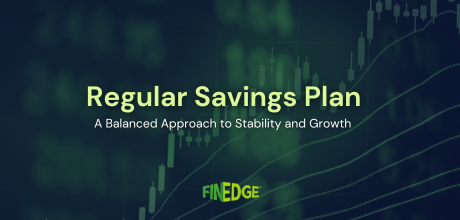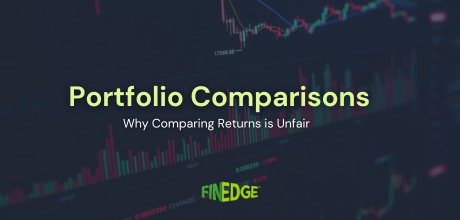Why You Should Begin Your Tax Savings For 2017-18 Right Now!

Don’t let last-minute tax-saving rush lead to poor financial decisions! Instead of locking money in low-return instruments, start an SIP in an ELSS fund. It offers tax benefits under Section 80C, the shortest lock-in period (3 years), and the potential for long-term growth. Plan wisely and let your investments work for you!
The month of March is usually synonymous with mad scrambles for parking away funds in tax saving instruments under Section 80C! Unfortunately, investment decisions taken in a hurry don’t often turn out to be wise.
An interesting insight
A recent survey by a leading global Financial Planning firm revealed an interesting insight - that is, “Indians tend to buy the right products for the wrong reasons”. A very clear example of the above is the innate tendency to reach out for LIC policies to fulfill our 80C requirement of Rs. 1.5 Lacs – usually at the last moment.
While our intention isn’t to berate LIC policies or life insurance as a product, the fact remains that there needs to be a very solid reason and rationale behind making an investment or saving - and the objective of the investment or savings product must correlate well with the financial objective(s) of the individual making the investment. For instance, we often come across young clients with no financial dependents who deploy their full quota of 1.5 Lacs per annum into life insurance for the purpose of tax saving! Insurance primarily being a risk management tool, this so called saving adds very little value compared to what more a more aggressive, long term investment would have.
We recommend a bottom up approach instead – work out how much life cover you require (based on the number of dependents and your financial liabilities) and allocate the required annual premium to a portfolio of life insurance policies to fulfill this requirement. Subtract this amount and any other qualified 80C savings (such as PPF, home loan principal, 5 year FD’s and children’s school tuitions) you will make in the coming financial year from 1.50 Lacs and divide this into monthly amounts. Start a monthly SIP in a top ranked ELSS for this calculated amount. It’s as simple as that!
SIP and ELSS – a winning combination
An Equity Linked Savings Scheme (ELSS) is a type of diversified equity mutual fund with a lock in period of 3 years. ELSS funds offer long term capital growth by investing in a diversified portfolio of stocks. The returns from an ELSS are not guaranteed but market linked. This lends an element of risk to ELSS investing, as the capital value will fluctuate with the rise and fall in stock prices.
Compared to other traditional tax savings schemes, an ELSS has the shortest lock-in period. While NSC and PPF have lock in periods of 6 and 15 years respectively, most insurance policies tend to have lock-in periods exceeding a decade. By opting for the ‘Dividend Payout’ option is an ELSS, investors can receive tax free payouts from their investment even before the maturity of the scheme.
Convenience
Starting an SIP in an ELSS is a simple, hassle free process. There are no mountains of paperwork to wade through, no medical examinations to be conducted and no delays in issuances. The entire documentation process can be completed in a matter of minutes.
In addition, breaking the required annual amount into smaller monthly tranches will make it a lot easier on the pocket and won’t lead to an inconvenient year-end financial crunch in 2018!
Risk Mitigation
As mentioned earlier, investing in equities can be risky. While the risks of an ELSS can never be fully eliminated, they can be ‘managed’ by allocating a fixed sum of money at periodic intervals into the fund in a disciplined way. By saving in this manner, you will automatically be averaging out the purchase price of your units and significantly reducing the risk of losing capital in the long term. This feature is called “rupee cost averaging”.
By starting an SIP in an ELSS now, you can avail the risk mitigation benefits of rupee cost averaging throughout FY 2017-18. Alternatively, if you were to deploy a lump sum amount in March 2018, you bear the potential risk of investing a larger quantum of money at a market peak.
Compounding Benefits
Compounding can be best described as ‘returns earned on returns’. By accruing profits within your ELSS over a 10-15 year time frame rather than redeeming (and spending!) the profits periodically, you can reap the magic of compounding, which Albert Einstein called the ‘eighth wonder of the world’.
To illustrate with a simple example, your monthly SIP of Rs. 4,166 when allowed to compound over 25 years, could potentially grow 6.26 times to nearly 80 Lacs^ – contributing significantly to your retirement fund. In order to reap the benefits of compounding, remember to always opt for the ‘Growth’ option (instead of ‘Dividend’) in your Equity SIP.
Summing up
Don’t fall prey to the last minute tax planning rush and end up taking unwise financial decisions! Start an SIP in a top ranked ELSS right away and put this year’s tax savings on auto-pilot instead.
Your Investing Experts
Relevant Articles
Regular Savings Plan: A Balanced Approach to Stability and Growth
Not every investment in a portfolio is meant to maximise returns. Some are meant to preserve capital, manage volatility, and provide predictability. A regular savings plan serves exactly this role. It is designed for investors who want a more measured approach where stability takes priority, and growth plays a supporting role rather than the lead.
From Coffee to Crorepati: Small Lifestyle Tweaks Gen Z Can Make to Start Investing Early
Gen Z is often told to “stop buying coffee” if they want to invest. But that misses the point. Building wealth isn’t about sacrificing everything you enjoy. It’s about understanding how small, everyday decisions shape long-term habits. Starting early even with modest amounts can quietly make a meaningful difference over time.
Why Comparing Investment Returns Can Be Misleading
At some point, most investors have compared their investment returns with a friend, a colleague, or a number they saw online and wondered why their outcomes looked different. While this instinct is natural, return comparisons are often incomplete and, in many cases, misleading. Understanding why returns differ is far more important than comparing the numbers themselves.
.png)

.png)
